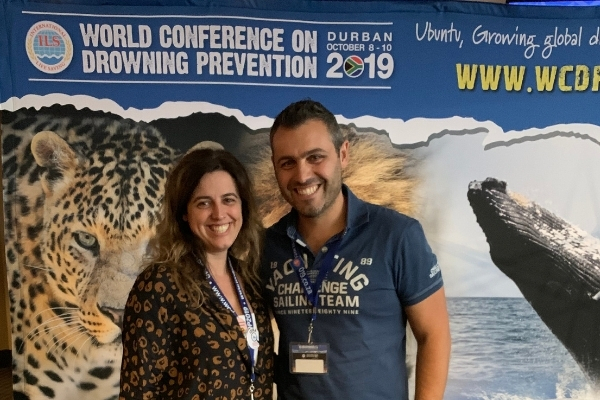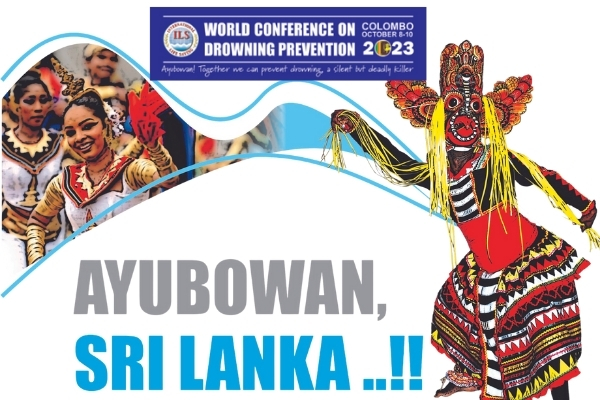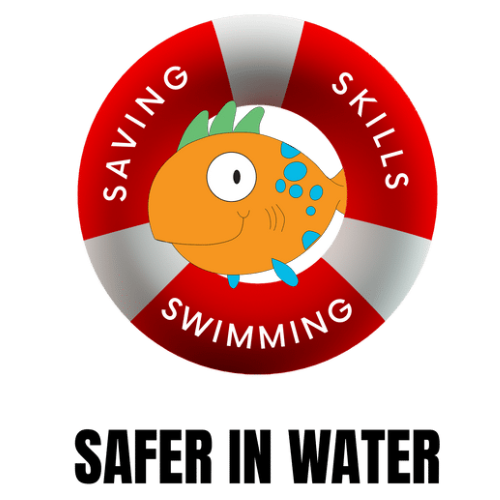Swimming classes for children
At each stage of a child’s development there are new learnings to be made and new experiences to be had.
Baby swimming classes | 0 - 36 moths old
Baby swimming is the familiarization with the aquatic environment in our program. We design methods and strategies with babies in mind from the time they are born (adapting in the bath), moving to the pool at 4/5 months until 36 months. In baby swimming we start our aquatic education with parents, sharing knowledge about early stimulation and aquatic safety.
Initially we want parents to stimulate the innate reflexes that the child is born with so that they can be allies not only in adapting to the aquatic environment, but also in safety. The most important reflexes we will have to work on are: the glottis reflex, the grip reflex, the plantar reflex, and the swimming and walking reflexes.
Based on the response we get from the babies we continue to pursue our goals at the level of psychomotor development covering the three areas of development: motor area / cognitive area / social-affective area. In these classes, we use playful activities providing the largest number of experiences to develop not only these 3 areas but also the adaptation to the aquatic environment.
Skills to be acquired:
Behaviors in and outside the water
It is essential that the child develops habits and rules from an early age, learning how to enter the water safely, taking into account the surrounding space. Likewise, it is very important to learn to get out of the water in the most conventional way and in an exceptional way (when facing situations of falling). However, the essential thing is to learn to approach the water with an adult accompanying them.
Balance
Learning to balance in shallow water, to orient yourself, to rotate, are vital skills for aquatic safety.
Breathing
Getting used to having water in the face, doing apnea, and increasing the immersion time greatly facilitates the relationship with the aquatic environment and is one of the fundamental safety skills. We provide these activities by first using the glottis reflex, then increasing the immersion time gradually and associated with playful activities, and finally coordinating breathing (inhaling outside through the mouth and exhaling inside through the mouth and nose).
Vertical displacements
In the first phase, they will always be accompanied with the help of the parents, later we will provide the experience of doing it with auxiliary material, to increase the rhythm and learn the intention of reaching something. But still at this stage, it is essential that the baby (even if for a short distance) can do it alone. This is an important skill for staying afloat and safe for a few seconds until help arrives.
Dorsal foating
It is obvious that this skill is the one that allows the airway to be out of the water, and therefore seems to be the most effective in water safety. But it is also the most difficult skill for babies to learn, first because the water in their ears makes them feel uncomfortable, then because their visual field is limited to the ceiling, and then because it makes them the most insecure. It is important to provide abilities that make them discover their point of balance to stay afloat. More than that, associating vertical displacement with the removal of the airways from the water, in a “sitting” position, allows them to float more easily without trauma at this age. The most important thing in this phase is to carry out activities that allow for a comprehensive psychomotor development in the three areas we mentioned previously. Activities that make them experience, experiment, understand, and feel the water. Only then will they be able to act in accordance with aquatic safety skills.
swimming | 3 - 5 years old
Basic Safety Skills
From 3 to 5 years old children have a very favorable development in the three areas that are fundamental to the learning of basic safety skills. At this stage, children should understand and follow safety rules such as: knowing how to get in and out safely and independently, knowing the rules of beach signs and the importance of being accompanied by an adult when in the water. It is at this point that the child learns a set of skills that make them know how to be in the water, how to act and react to unexpected situations, not by performing swimming techniques but by performing the fundamental skills that sustain them in the water.
Key abilities to be acquired at this stage:
Enter the water safely and be able to get out without assistance;
Do the immersion in apnea initially, until the coordination of breathing;
Perform rotations that make you return to the point where you left;
Alternate the displacements forward, backward and sideways;
Swim 6 meters under water;
Go from ventral to dorsal position in any situation: in support, after jump, after prolonged immersion.
Swimming | 6 - 12 years old
Aquatic Readiness
At this stage, in addition to already performing the basic safety procedures, we try to perform more complete skills according to your abilities. For example, combined exercises. Combination exercises are those that make use of swimming styles combined with aquatic safety skills demonstrating an improved aquatic readiness to react in unfavorable situations. The greater understanding of safety abilities, risks, and ways of rescue gives them a confidence that makes them aware of their abilities and the risks they may incur in certain situations, thus assessing the best way to get to safety, starting with prevention and using reaction as a last resort to avoid drowning. The aquatic biography acquired so far allows them a greater knowledge of the water.
news safer in water
“Afogamento é um assassino líder mundialmente, sobretudo entre crianças e jovens adultos. É evitável, mas negligenciado em relação ao seu impacto sobre as famílias, comunidades e meios de subsistência”, WHO (2017).

Africa do Sul
Congresso Mundial na Prevenção do afogamento
O SIW esteve presente no WCDP2019, representado pela criadora da metodologia, com o objetivo de promover a segurança aquática pelo ensino da natação e de habilidades de segurança tendo em conta o desenvolvimento, capacidades e limites da criança. Os pilares para a criação e aprendizagem de skills baseiam-se sobretudo nos fatores que influenciam a capacidade de nadar/afogar numa situação inesperada e as causas do afogamento.
Ainda no Congresso mundial a nossa fundadora participou ainda num encontro de especialistas da prevenção do afogamento para investigarem sobre os comportamentos tipo de uma pessoa em dificuldades no meio aquático. Deste encontro resultou um artigo já publicado “The visible Behaviour of Drowning Persons: a pilot observational study using Analytic Software and a Nominal Group Technique” published in the International Journal of Environmental Research and Public Health [IJERPH]. Podem consultar aqui.

Sri Lanka
Congresso Mundial na Prevenção do Afogamento
Queremos muito estar presentes no próximo congresso mundial sobre prevenção do afogamento e por isso estamos a trabalhar no sentido de estudar, promover e aplicar cada vez mais estratégias que possam ser aplicadas nas aulas de natação para proporcionar uma educação aquática consciente para a prevenção do afogamento.

Portugal
Livro "Lengalengas da segurança aquática"
Está prestes a ser lançado um livro infantil em prosa rimada, com conteúdos lúdicos e ilustrados sobre as regras de segurança dentro e em torno de água, na praia e piscina, para crianças dos 3 aos 9 anos de idade. Com este livro esperamos promover o conhecimento e manter as crianças mais seguras junto da água.
